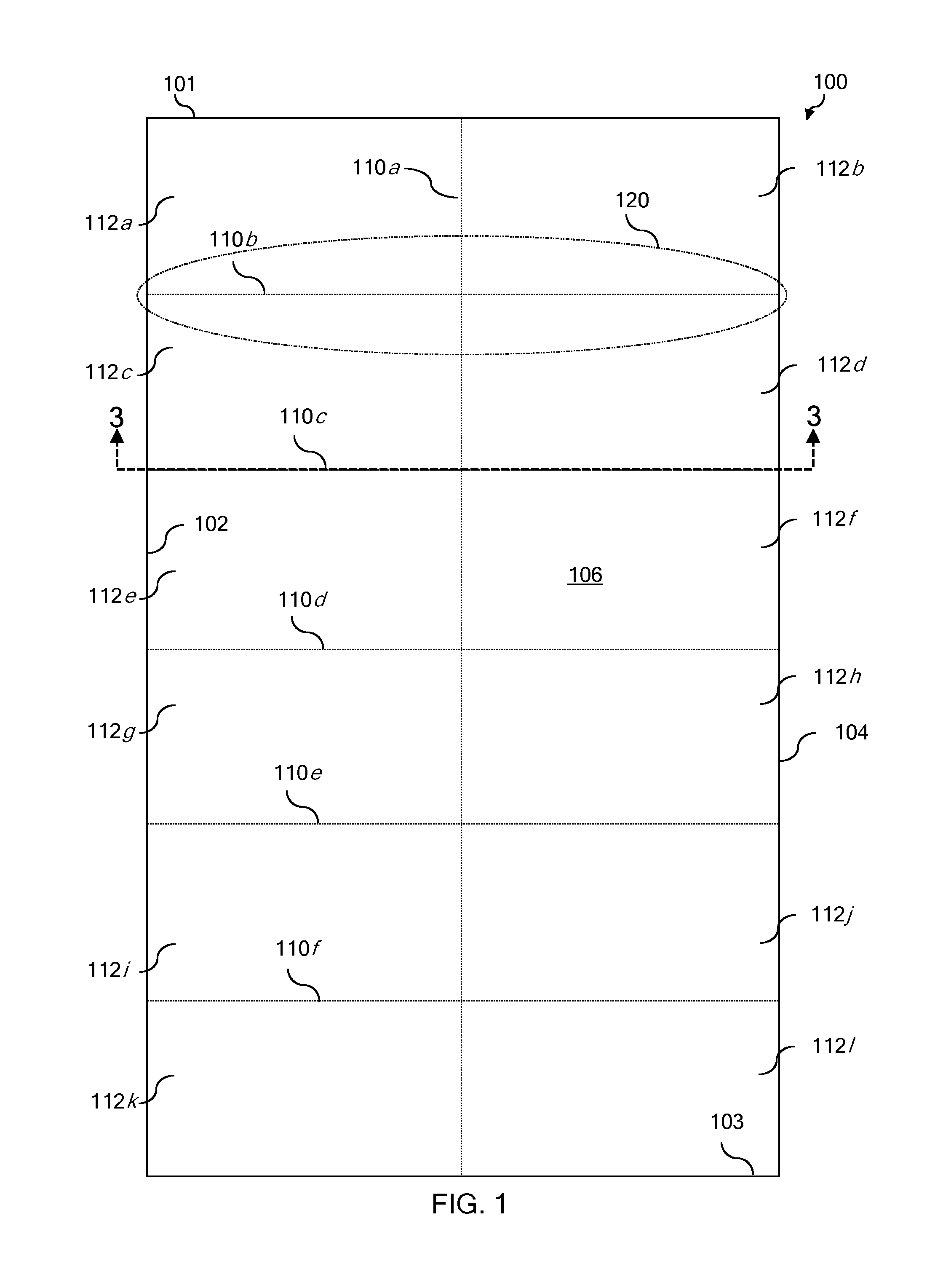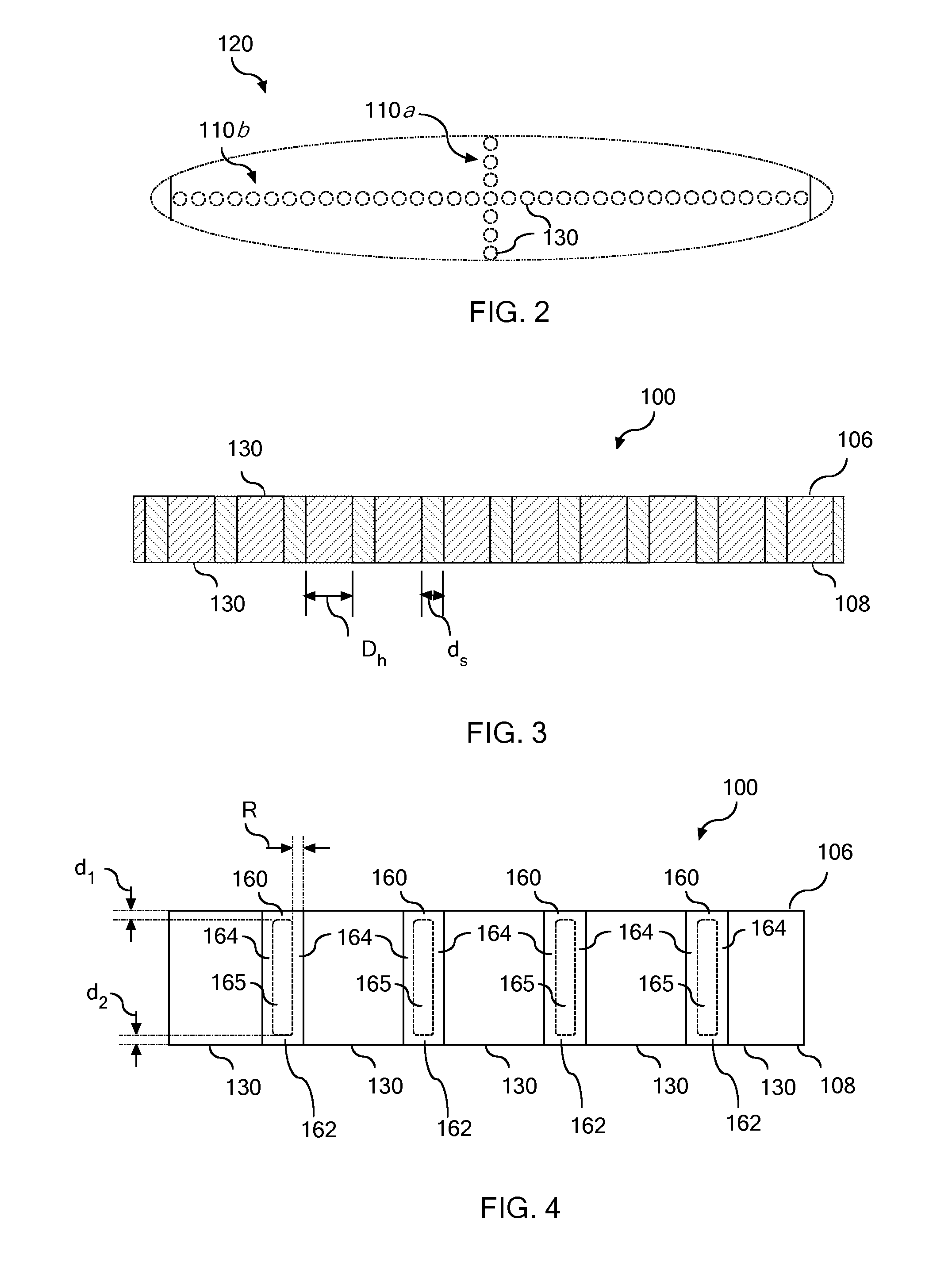Strengthened glass substrate sheets and methods for fabricating glass panels from glass substrate sheets
a technology of reinforced glass and substrate sheets, applied in glass tempering apparatuses, stamps, packaging, etc., can solve the problems of increased geometric complexity of glass panels, prone to damage, and no newly formed edges
- Summary
- Abstract
- Description
- Claims
- Application Information
AI Technical Summary
Benefits of technology
Problems solved by technology
Method used
Image
Examples
example 1
[0064]Ten sets of 50 mm×50 mm glass substrate sheets were formed from Corning Code 2317 GORILLA® alkali aluminosilicate glass. Each glass substrate sheet had a thickness of 0.7 mm In this example, two straight series of holes were laser-drilled from a first edge to a second edge of the each glass substrate sheets. Each series of holes was separated from an edge by a distance of about 9.525 mm (⅜ inch) and were separated from each other by about 31.75 mm (1.25 inches). A femtosecond laser with 15 ps pulses (1064 nm wavelength, 6.4 W power, 500 kHz frequency) along with a galvo-scanner and a f-theta lens (f=130 mm) were used to laser drill 0.4 mm diameter holes with a spacing of 0.7 mm between each hole (measured from the center of each hole). The samples were acid etched for 15 minutes in a 5% / HF / 5% HCl acid mixture to remove surface flaws, and then ion exchanged at 410° C. for 7 hours in a 100% KNO3 bath. After the ion exchange process, the glass substrate sheets were laser-scored a...
example 2
[0066]Ten sets of 50 mm×50 mm glass substrate sheets were formed from Corning Code 2317 GORILLA® alkali aluminosilicate glass. Each glass substrate sheet had a thickness of 0.7 mm In this second Example, two straight series of holes were mechanically drilled with a diamond drill from a first edge to a second edge of the each glass substrate sheets. Each series of holes was separated from an edge by a distance of about 9.525 mm (⅜ inch) and were separated from each other by about 31.75 mm (1.25 inches). The diamond drill was used to mechanically drill 0.26 mm diameter holes with a spacing of 1.0 mm between each hole (measured from the center of each hole). The samples were acid etched for 15 minutes in a 5% / HF / 5% HCl acid mixture to remove surface flaws, and then ion exchanged at 410° C. for 7 hours in a 100% KNO3 bath as described above regarding Example 1. After the ion exchange process, the glass substrate sheets were laser-scored along the series of holes using a femtosecond lase...
PUM
| Property | Measurement | Unit |
|---|---|---|
| Length | aaaaa | aaaaa |
| Length | aaaaa | aaaaa |
| Length | aaaaa | aaaaa |
Abstract
Description
Claims
Application Information
 Login to View More
Login to View More - R&D
- Intellectual Property
- Life Sciences
- Materials
- Tech Scout
- Unparalleled Data Quality
- Higher Quality Content
- 60% Fewer Hallucinations
Browse by: Latest US Patents, China's latest patents, Technical Efficacy Thesaurus, Application Domain, Technology Topic, Popular Technical Reports.
© 2025 PatSnap. All rights reserved.Legal|Privacy policy|Modern Slavery Act Transparency Statement|Sitemap|About US| Contact US: help@patsnap.com



